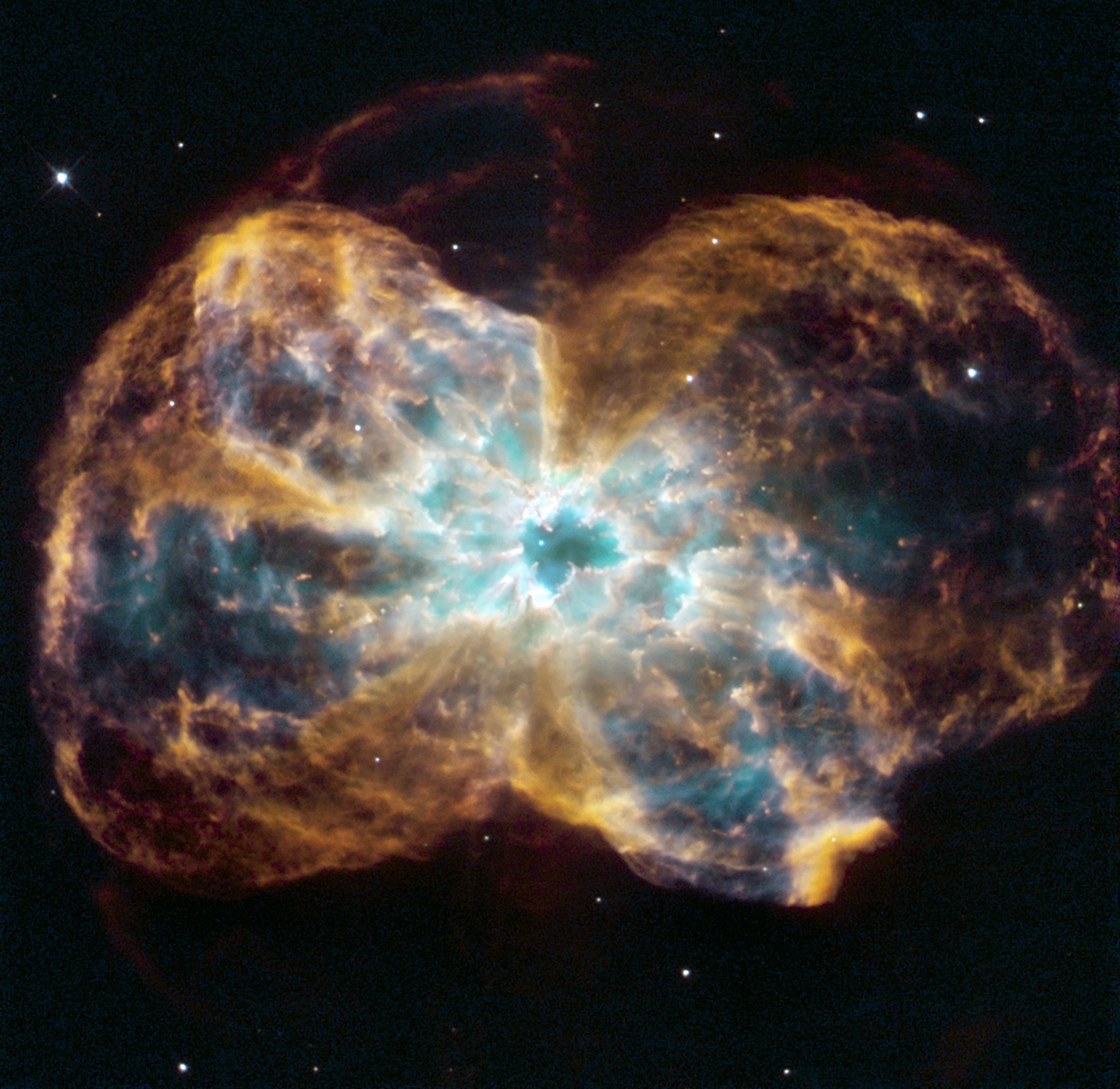
My favorite two things culture has to offer are blood and guts. Scary movies are strangely cathartic and Caravaggio’s paintings are beguiling — though Caravaggio’s real-life violence is much more upsetting. Kill your heroes, they say, but not literally. The discovery of a rare, vicious star tells me that humans aren’t the only ones pursuing what’s macabre.
You can read all about that strange, parent-destroying star in today’s newsletter, but first, you need to respond to this week’s not-so-spooky question — what’s the best constellation and why? We’ll feature some of your responses in a newsletter next week. Do the Big Dipper proud and hit ‘reply.’
This is an adapted version of the Inverse Daily newsletter for Thursday, February 17, 2022. Subscribe for free and earn rewards for reading every day in your inbox. ✉️

This rare Frankenstein star wears the skin of its dead companion
A star is born in space — Hollywood could never, but this star might be too gruesome to be Bradley Cooper’s love interest anyway. Though, it looks normal enough. Writer Nathaniel Scharping describes the “unique new kind of star” as “a core of helium surrounded by an outer layer of carbon and oxygen.” But astronomers have identified only “two [of these stars] so far out of the hundreds of millions of cataloged stars,” which might be because its relationship to its parents is somewhat… strained.
The star is born from two white dwarf stars, but “the merger that creates this new type of star involves tearing one of the white dwarfs apart and layering it on top of the other white dwarf, in the process kickstarting a new round of nuclear fusion inside the star,” writes Scharping. “At least, that’s the hypothesis put forward in a new paper by a team of researchers from Argentina and Germany, who say they’ve finally come up with an explanation for these exotic stars.”
The researchers suggest that these Franken-stars (“officially called a carbon-oxygen-rich subdwarf O star,” writes Scharping) can only be made when “different kinds of white dwarfs of very particular sizes” collide.
Hello, Clarice: The Webb telescope’s first star images are finally here

Tom Holland is telling a story ‘gamers haven’t seen’
British actor Tom Holland (who is best known for being in a relationship that’s very popular with teens. Also, he’s Spider-Man) is helping bring video games to the big screen. On February 18, “Uncharted — a video game franchise deliberately inspired by blockbuster movies — comes full circle,” writes Inverse entertainment writer Eric Francisco.
The movie “arrives from director Ruben Fleischer, with Holland as an adrift, 25-year-old Nathan Drake recruited by seasoned explorer Sully (Mark Wahlberg) on a mission to retrieve Ferdinand Magellan’s lost gold,” reports Francisco. In this exclusive interview, Holland tells Inverse that “people that played the video game have been so immersed that, when they watch a film, they are bored.”
To remedy that, he and the directors decided to “tell the story from the beginning, a point of view gamers haven’t seen: Nathan and Sully’s first adventure.” If you don’t count yourself among those familiar gamers, however, Uncharted’s producer Alex Gartner wants you to know that you’ll still have fun. “All our energy has gone into making this the most fun it can be,” he told Inverse. In the end, isn’t that what it’s all about?
He’s so dreamy: Astronomers spot supermassive black hole hiding behind a cloud

Study reveals a massive clean energy flaw in Biden’s 2030 EV plan
At the end of 2021, the Biden-Harris released “an EV Charging Action Plan to outline steps federal agencies are taking to support developing and deploying chargers in American communities across the country,” according to the White House’s website. The administration’s wholehearted commitment to electric vehicles certainly looks good, but a new study published in the journal Proceedings of the National Academy of Sciences suggests it misses something crucial about electricity in the U.S.
“Without significant changes to the electricity sector,” writes Tara Yarlagadda, “electric vehicles may not help the climate crisis as much as we think.”
Unless there are “substantial changes to boost renewable energy,” writes Yarlagadda, the study suggests that all of the emissions necessary to power Biden’s EVs will make over half of their reductions moot. This is because electricity is still generated primarily through natural gas and coal, so EVs aren’t ready to save the world yet. “In many ways, the sustainable promise of electric vehicles in the U.S. depends on the future of coal,” writes Yarlagadda.
All is not well: Discrimination lawsuit alleges racist practices at Tesla’s factory

This ‘green’ solution might have made cars even worse for the planet
While we’re here discussing inconvenient truths, we should cover gas, your car’s favorite treat. Because of the Renewable Fuel Standard (RFS), companies have been required to add ethanol to American fuel since 2005. “Initially, the policy was meant to boost ethanol production from various sources, but now almost 95 percent of the country's ethanol comes from corn,” writes science reporter Lauren Leffer.
The government wasn’t trying to get your car hooked on corn, though. It just wanted to “reduce U.S. dependence on foreign oil and minimize the environmental burden of the trillions of miles Americans collectively drive each year,” writes Leffer. Sadly, fresh research in the Proceedings of the National Academy of Sciences says it failed.
“Researchers focused on the climate change costs of creating suitable farmland to grow all the corn that ethanol is derived from,” writes Leffer. They then discovered that RFS “changed the national landscape enough to make gassing up at least 25 percent more carbon-intensive than it would've been otherwise.
Don’t be corny: Is sugar better than high fructose corn syrup?

About this newsletter: Do you think it can be improved? Have a story idea? Want to share a story about the time you met an astronaut? Send those thoughts and more to newsletter@inverse.com.
- On this day in history: Russian chemist Dmitri Mendeleev, nicknamed the Father of the Periodic Table, scribbled his first draft for the periodic table today in 1869. The table was a revelation to chemistry, and it formed the strong backbones of the table used today.
- Song of the day: “Rest My Chemistry,” by Interpol.







